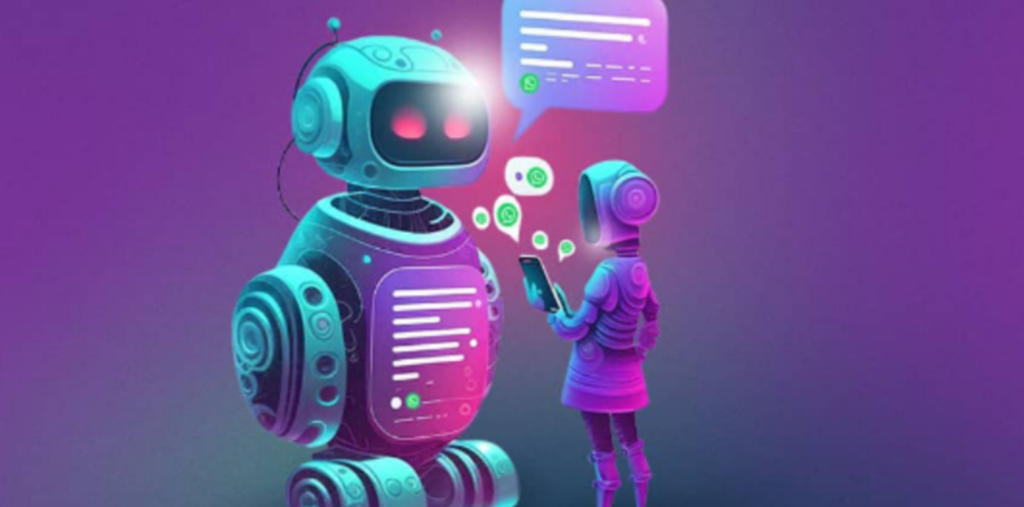blog post
Make Your Own Chatbots

OpenAI, the pioneering force behind ChatGPT, has unveiled a remarkable new feature allowing subscribers to create their own custom chatbots, known as GPTs, and it’s transforming the landscape of personalized AI.
Launched at OpenAI’s Dev Day event, this feature is available to ChatGPT Plus and Enterprise subscribers, offering an intuitive, user-friendly way to design custom GPT chatbots.
What sets these custom GPTs apart is their specialized focus. Instead of the broad scope of the standard ChatGPT model, these new chatbots can be tailored to specific tasks or areas. For instance, subscribers could develop a chatbot dedicated to teaching computer science or crafting marketing logos and campaigns.
Versatile and Commercial – The GPT Store
The versatility of these custom GPTs extends to privacy and sharing options. Users can keep their creations private, share them publicly, or deploy them within an organization. Adding a commercial dimension, OpenAI plans to launch a GPT store where subscribers can publish and monetize their custom GPTs.
Creating a custom GPT is remarkably straightforward and doesn’t require any coding expertise. The process involves simply conversing with the GPT Builder, detailing the desired functions, and selecting from available ChatGPT capabilities like Web Browsing, DALL-E Image Generation, or Code Interpreter. This flexibility even allows integration with real-world data sources, such as external databases and e-commerce systems.
A Game Changer for Content Dev
We have personally tested this new feature, experiencing the ease of creating a “Summary Sage” GPT designed to summarize documents. The process included choosing the document types, customizing the GPT’s image, and deciding on privacy settings, all accomplished through an intuitive interface.
The potential for these custom GPTs is immense, not just for individual experimentation but also for businesses and organizations looking to infuse AI into their operations. With its user-friendly design and no need for programming skills, this innovation by OpenAI could be a game-changer in how AI is leveraged for specific tasks and applications.Top of Form
Top of Form
Bottom of Form
How NLP Impacted AI
In the early 2020s, a significant leap forward occurred in the realm of artificial intelligence, specifically in the field of natural language processing (NLP). This advancement wasn’t just a singular event but a culmination of years of research and development, converging into a technology that would redefine human-computer interaction: the development of GPT-3 and its successors.
Our story begins in a research lab, a modern-day forge of innovation where data scientists and engineers gathered, driven by a vision to create an AI that could understand and generate human language with unprecedented accuracy and fluency. The team, a collective of some of the brightest minds in AI, worked under the aegis of OpenAI, an organization renowned for its cutting-edge research in artificial intelligence.
The Transformer Model
The core of this breakthrough lay in a technology known as a transformer model, a neural network architecture that was particularly adept at handling sequences of data, such as sentences in a text. What set GPT-3 apart was its scale and the sophistication of its training. With an astonishing 175 billion parameters, GPT-3 was trained on a diverse range of internet text. This training enabled it to generate text that was remarkably coherent, contextually relevant, and often indistinguishable from that written by a human.
The implications of this development were profound. Suddenly, industries across the board began to envision and implement applications that were previously the stuff of science fiction. Customer service bots became more empathetic and efficient, mimicking human conversation with a startling degree of nuance. Content creators found a new tool that could assist in generating creative ideas and even writing drafts. Educators used it to develop more interactive and personalized learning experiences. Even artists started experimenting with it to create novel forms of poetry and storytelling.
Ethics
But this technological leap was not without its skeptics and challenges. Concerns about the ethical implications of such a powerful tool surfaced. The potential for misuse in spreading misinformation, the impact on job markets, and the philosophical questions about the nature of intelligence and creativity were hotly debated in academic and tech circles alike.
Furthermore, the development sparked a conversation about the role of governance in AI. How should such technology be regulated? Who should have access to it, and how can its benefits be distributed equitably while mitigating its risks? These questions loomed large in the discourse surrounding AI.
Humans Will Decide
As the story of this technological advancement unfolded, it became clear that it was not just about the technology itself but also about how society chooses to embrace and manage it. The development of GPT-3 and its successors stood as a beacon, highlighting the incredible potential of AI, while simultaneously casting a shadow of responsibility on those who wield it.
In the end, this story of technology and AI development is ongoing, a chapter in a much larger narrative about human ingenuity, ethics, and the future of our symbiotic relationship with machines. It’s a story that continues to evolve, driven by both the bright promise of innovation and the cautious wisdom of restraint.
Stay tuned.
As each chapter unfolds, we will bring it to you here in the newsletter.
Author
Steve King
Managing Director, CyberEd
King, an experienced cybersecurity professional, has served in senior leadership roles in technology development for the past 20 years. He has founded nine startups, including Endymion Systems and seeCommerce. He has held leadership roles in marketing and product development, operating as CEO, CTO and CISO for several startups, including Netswitch Technology Management. He also served as CIO for Memorex and was the co-founder of the Cambridge Systems Group.